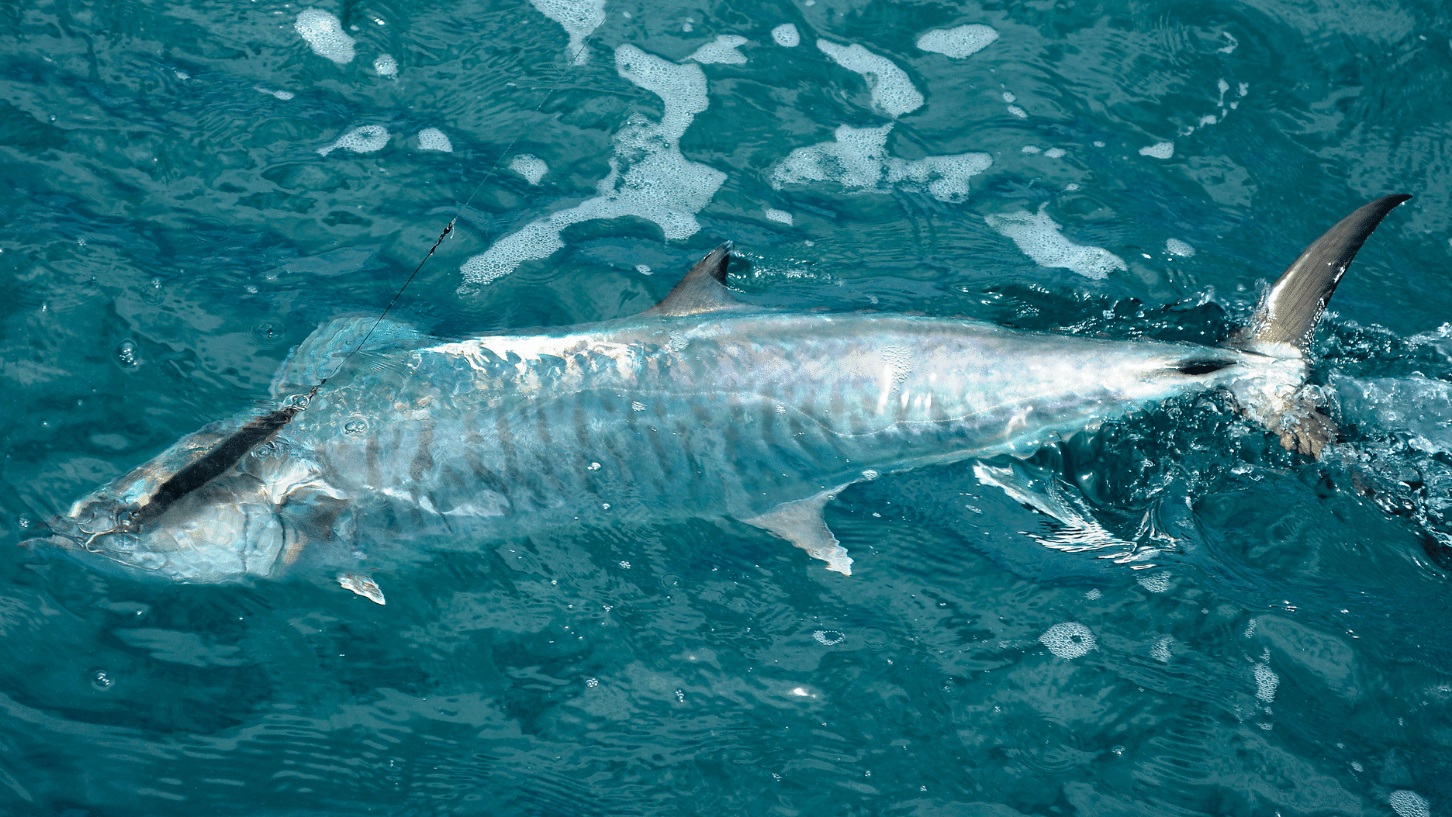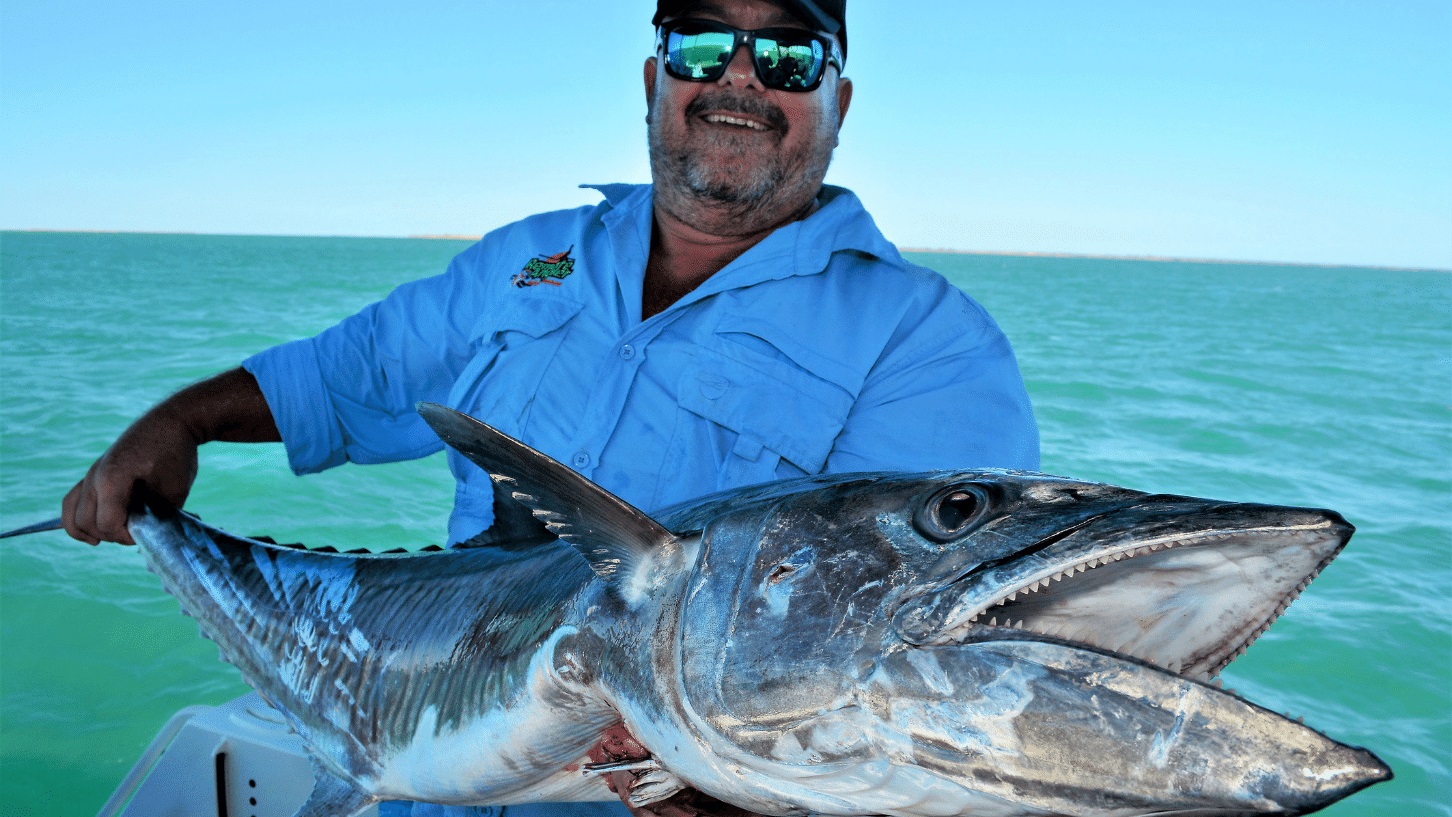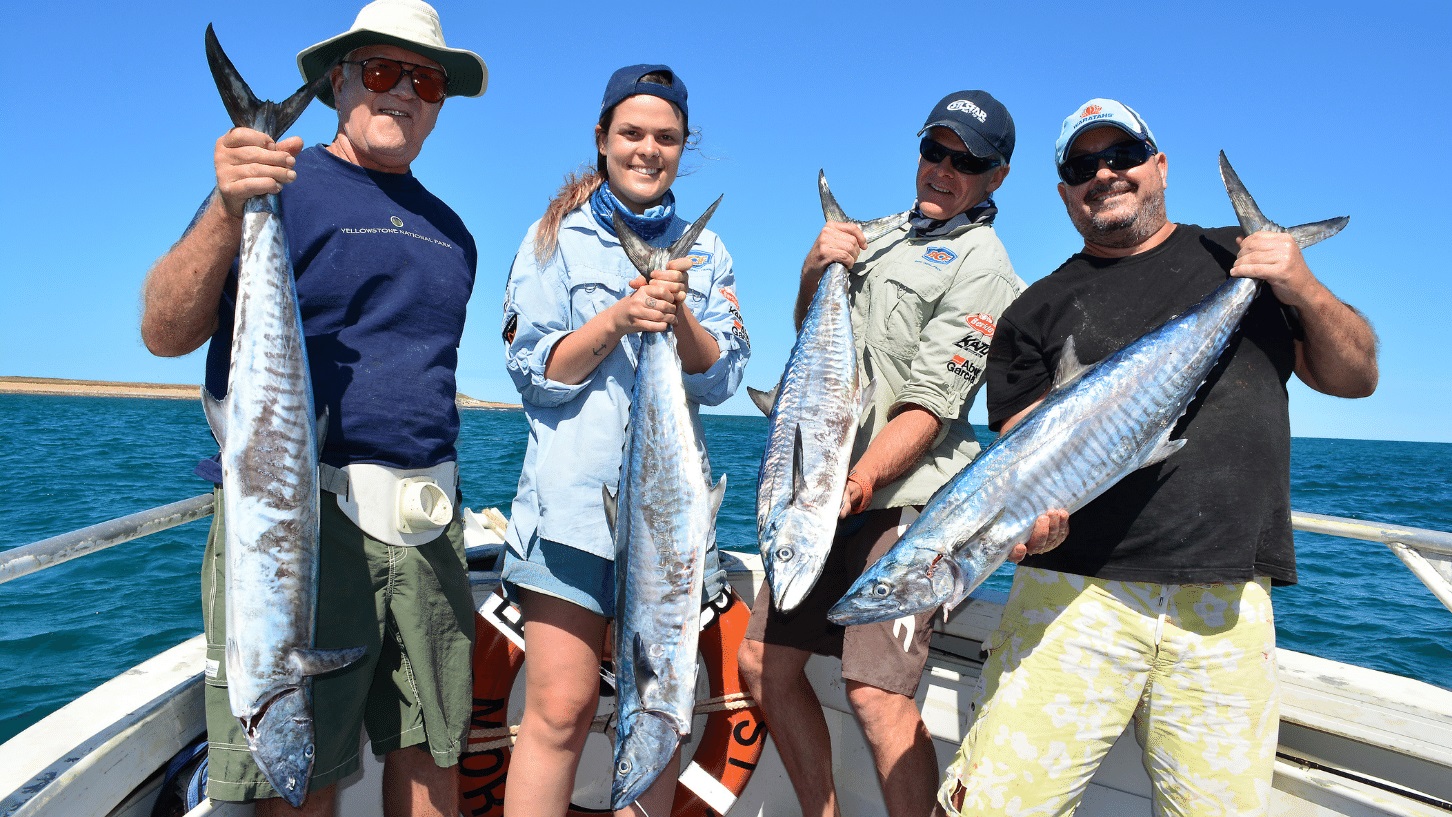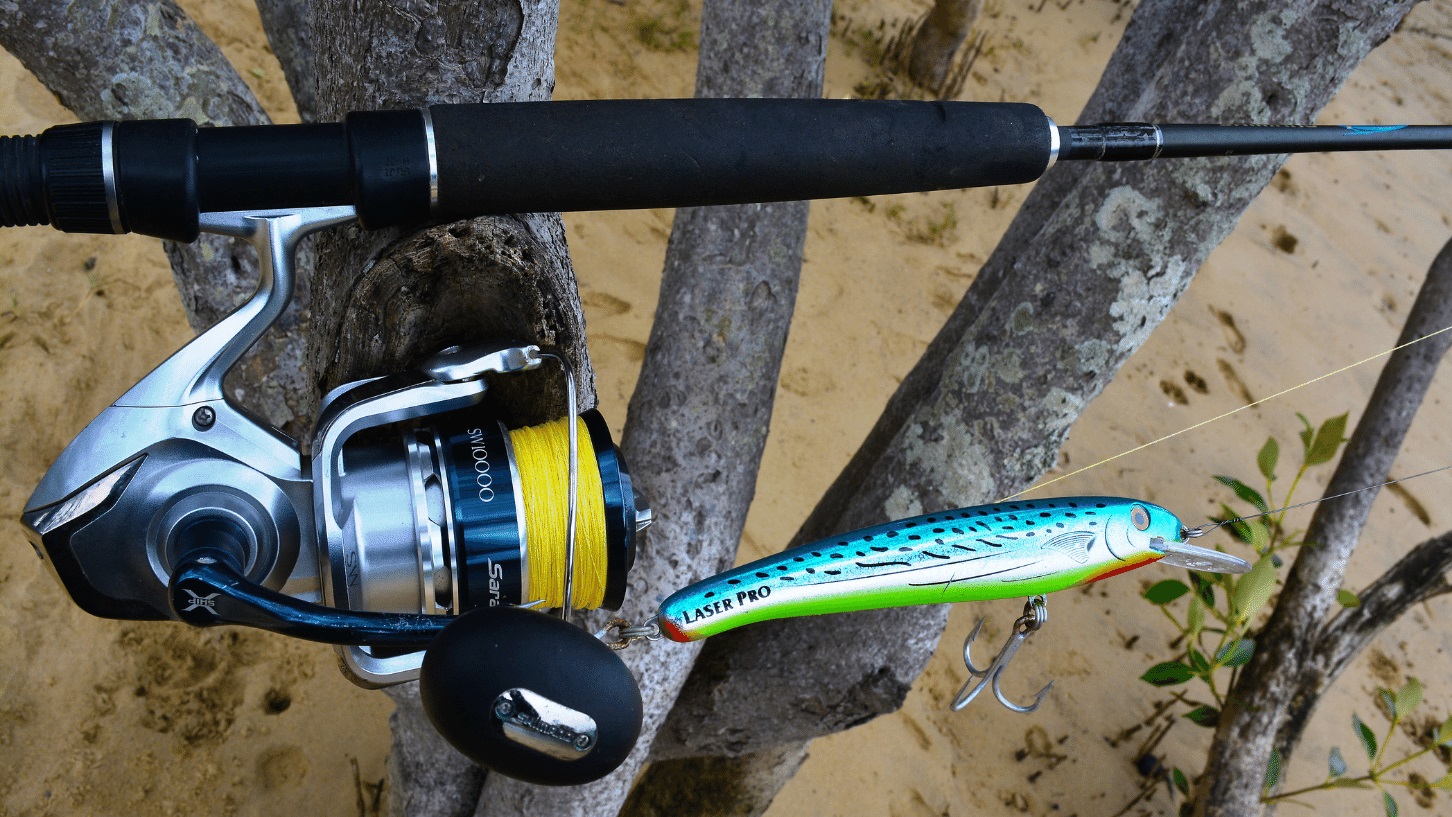| Your browser is not supported. | ||
|
Please browse our site using any of the following options:
| ||
Spanish Mackerel Fishing Tactics

For many other tropical and sub-tropical anglers, Spanish and spotted mackerel are the preferred targets during the warmer months. Andy Boughton shares his top tips for getting amongst them!
Members of the seer fish family, the narrow-barred Spanish mackerel (Scomberomorus commerson) are also known by locals as Spaniards, mackies, barries or blues, depending where you may reside in our big country.
Spanish mackerel live throughout the Indo-West Pacific region, particularly in tropical and sub-tropical waters. They are among northern Australia's most sought after sport fish, targeted by both recreational and commercial fishers.
Mackerel species inhabit inshore reefs and shoals, often within close proximity of the coastline, making them easily accessible to small trailer boats.
Spanish can live for more than 20 years, growing up to 2.5m and can weigh over 40kg. A fish rumoured to be 52kg caught off the beach at Fraser Island was reported in 2015, while most catches average around 10kg, measuring just over a metre.
If you're effective at catching Spanish in the southern extremities of their range, you'll have no problem landing them further north where they are most prolific.
For most of us our fishing activities come second to the work roster, family commitments and weather conditions. When an opportunity becomes available to chase a mackerel, here's a few things to consider.

Spanish mackerel season and range
Spanish and spotted mackerel are caught regularly in South East Queensland and the NSW Far North Coast during the warmer months when water temperatures rise above 23°C. More consistent catches year-round occur above latitude 25° S, north of Fraser Island, QLD and latitude 28°S, above Geraldton, WA.
The South East Queensland/NSW Far North Coast season generally starts in early December running through to late May each year. As is the case for most species, the season will vary in quality from year to year. The abundance of fish will depend on the arrival and distribution of the tropical East Australian Current that pushes down the East Coast from the Coral Sea. Wind direction, seasonal rain fall (run-off) and bait will all determine the difference between a poor or exceptional season.
An interesting observation over the years on the Gold Coast is the arrival of Christmas Beetles just prior to Christmas often coinciding with the arrival of Spanish and spotted mackerel. The best and most consistent months to target Spanish in sub-tropical waters are between February and April when the water is at its premium temperature and condition.
Wind and water conditions
The summer season brings the warmest conditions, both above and below the water, with the ocean temperature usually peaking in March each year. These warmer conditions bring north-east winds, which you'd think may promote favourable conditions, but in fact deliver cold, nutrient-rich water from deep off the Continental shelf. This is known as the Coriolis Effect - sustained winds in a consistent direction blowing over the ocean moving the top layer of seawater.
Northerly winds will turn the mackerel bite and most other offshore fishing opportunity off. Keep an eye on the forecast and look for a run of south-east winds that work in the opposite, pushing warm blue water onto our coastline - just perfect mackerel conditions.
Best tides for targeting Spanish mackerel
If your fishing adventure happens to fall on the bigger full or new moon tides, your success rate may improve, especially on those inshore coastal reefs and shoals. If the fishing is quiet on the smaller tides, try those wider/deeper grounds where there's more water movement.
One tip is to fish early mornings when boating traffic is minimal and the north-easterly wind hasn't yet kicked in.
The other big factor is bait. Those days on the water where you can't turn a reel are usually the days you struggle to find bait. The predators will be in numbers where the baitfish are.
Structure
The best Spanish and spotty grounds are those inshore reefs and gravel patches or wider reef edges in high flow locations.
Those low-lying, rubbly gravel patches are generally great for all species of mackerel. This is where the hard reef edges and bommies tend to produce and hold more Spanish than spotted mackerel.
While you're trolling a location, study your fish finder, concentrating your efforts around the bait balls and larger arches displayed.
Trolling for Spaniards
We all have our own style, preferred technique and gear selection. My first option when targeting Spaniards anywhere in Australia is trolling hardbody bibbed lures. Why, you ask? They're extremely effective, they catch everything that swims in the ocean, and I'm not required to catch or buy fresh bait prior to each fishing trip.
I like to troll at a speed between 5-13 knots, with lure placement 20-40m behind the boat. My trolling speed will depend on a few factors which include fishing location, lure selection and target species of mackerel.
Around home on the Gold Coast I achieve much better results trolling between 10-13 knots - the faster, the better! Trolling up north on the Great Barrier Reef, in the Gulf of Carpentaria, Northern Territory and Western Australia, 5 knots is just fine.
To assist keeping your lure in the water at these higher trolling speeds, with the use of adjustable rod holders keep the rod tip as close to the water surface as possible.
If you're targeting Spanish, start off with the larger size bib lures (150 to 200mm). Depending where the fish are feeding in the water column, choose an appropriate diving lure to achieve that depth. Quality lures on the market these days have depth ranges between 1-10m.
If the fishing is generally quiet, mix it up with your lure selection, varying diving depth, lure size, colour and action.
Those days where spotted, school, grey and shark mackerel are your target species, your chances will improve with one of the smaller size bib lure.

Trolling gear guide
When targeting Spanish, I use a medium weight spin outfit. Overhead combos are still extremely popular for many anglers and charter operators, but I prefer the lighter spin outfit. I go for a rod and reel that covers most of my offshore fishing options, whether I'm trolling for pelagics, jigging for kings or bottom bouncing for reef fish.
I use a Shimano T-Curve Deep Jig Spin 200. It's so versatile, light in weight and delivers plenty of grunt. Attached to that is a Shimano Saragosa 10000. Loaded with 50lb braid and 80lb mono leader, this is near perfect for any offshore fishing activity.
Spanish mackerel lures
There's plenty of good bib lures on the market that perform very well, but over the years I've found the Halco Laser Pro 190, 160 and 120 in the DD (2m) or XDD (6-7m) my lure of choice. Out of the pack it's tough, will catch anything and if you have the 190DD (2m) rigged and operating effectively, it can be trolled over 13 knots.
Very importantly, attach your lure to a wire trace for any toothy critter like mackerel and wahoo etc. Use crimps for multi-strand wire or a simple haywire twist with single strand wire. I prefer low profile 69lb Mason single strand that can be tied quickly and easily out on the water. In tropical waters further north I'll use a heavier 105lb single strand wire.
Wire choice is a personal preference of course. Multi-strand is not as prone to twists, bends and weaken like single strand can be. Avoid using snap clips between the lure and wire. You'll only end up in tears if they open up or break while fighting that fish of a lifetime!

Spinning gear for Spaniards
For casting metal slugs into bait balls I recommend a spinning rod around 7ft and 3-6kg or 4-8kg. You also want a reel with a fast retrieve rate, such as 6.2:1. Top it off with 30lb braid and 40lb mono leader and you're good to go.
If you're casting metal slugs into a bait school, keep your rod tip low and wind as fast as you can. Again, the faster the better!
There's not a better sight observing that mackerel or tuna attack your lure on the surface and then the sound of braid screaming from your reel!
Choose a metal slug that best replicates the baitfish mackerel are feeding on in the area. As they say, 'match the hatch'. The 15g and the 25g Gillies Baitfish' in white or blue works a treat and I always have plenty rigged with 40lb single strand wire, ready for action.
One of the bonus rewards chasing mackerel is the variety of quality bycatch you'll land. Even when the mackerel are quiet, there's often plenty of longtail tuna (northern bluefin), wahoo and many other tuna species available.
In saying all the above, if trolling bibbed lures isn't getting results on the day, try trolling a dead or live bonito, garfish, yellowtail or slimy mackerel. No Spanish can resist one of those lollypops!
Finally, on a safety note there's a few fish species that I'd recommend be subdued before pulling onboard. Spanish mackerel are one of those species. With their razor-sharp teeth, powerful jaw and big head shakes, those teeth and/or the trebles hanging from a mackerel's mouth can do some serious damage. I recommend humanely killing the fish over the side of your boat with a timber club or brain spike (aka the 'Pacifier') before bringing onboard.
If these beasts aren't subdued before landing in the boat these razor teeth can do some serious damage!
Find your local Anaconda store and check out our extensive range of fishing gear.